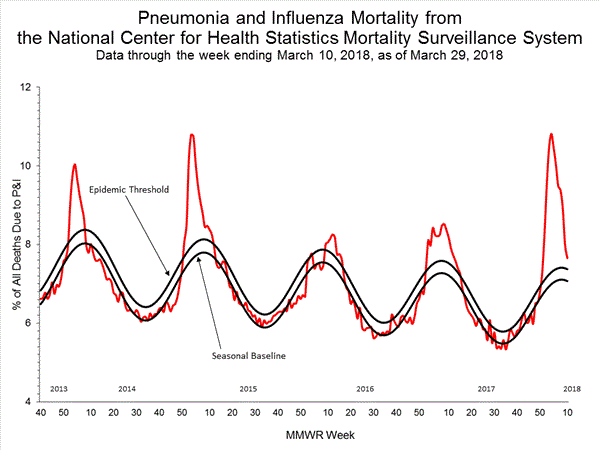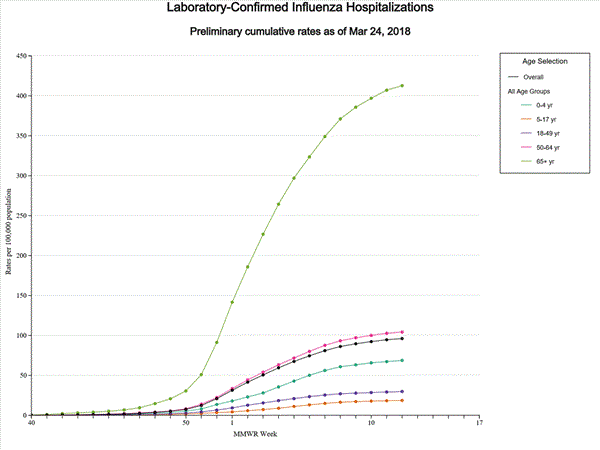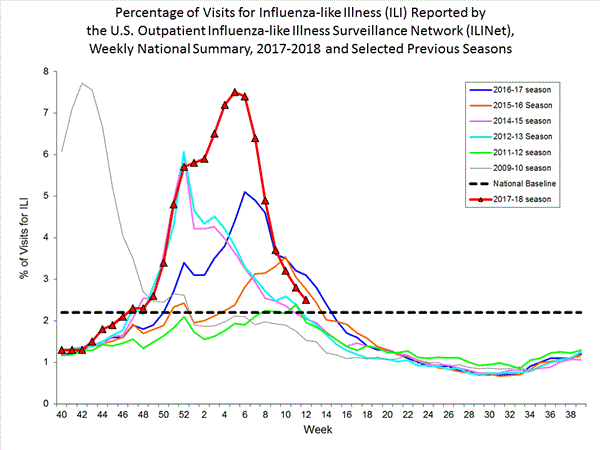Archive for April, 2018
South Africa: The world’s largest known listeria outbreak and it was all due to tainted baloney!
Monday, April 2nd, 2018The world’s largest known listeria outbreak has spread throughout South Africa for 15 months, killing 189 people. Health officials believe they have identified the source: bologna.
Since January last year, 982 confirmed cases of listeriosis had been recorded, the National Institute for Communicable Diseases in South Africa reported on Thursday. The infection, caused by food that has been contaminated with the bacterium Listeria monocytogenes, is often lethal.
A cluster of gastroenteritis cases among toddlers in a Johannesburg hospital this January led authorities to the sandwich meat in a day care center’s refrigerator — and in turn, to a meat production facility in the northern city of Polokwane. There, officials said they detected traces of LST6, the listeria strain identified in 91 percent of the outbreak’s cases.
https://www.youtube.com/watch?v=leGp7QMnBZk
Emergency Trauma Response to the Mosul Offensive, 2016-2017
Monday, April 2nd, 2018Fox, H., Stoddard, A. & Davidoff, J. (2018). Emergency trauma response to the Mosul offensive, 2016-2017: A review of issues and challenges. Humanitarian Outcomes, March.
“…..Despite certain weaknesses and limitations, the WHO-coordinated response succeeded in implementing a
large-scale, military-style referral chain system in highly difficult conditions and unquestionably saved lives.
An independent analysis of the data performed by a research team at John Hopkins Centre for Humanitarian
Health estimates that the WHO-coordinated trauma referral pathway saved between 1,500 and 1,800 lives –
approximately 600-1,330 civilians and the remaining majority combatants.
The total number of people treated is impossible to independently verify. WHO reporting cites that as of 7 August
2017, ‘some 20,449 people from Mosul city were referred through the established trauma pathways’. But these
figures include patients being counted multiple times as they passed through the referral pathway. The Iraqi
Department of Health estimated that 10,000 to 12,000 ‘medical activities’ were performed…….Despite these constraints, between October 2016 and November 2018, MSF performed 20,334 emergency room
consultations (of which 4,135 were ‘war trauma’3 cases and 1,594 were ‘red’ cases4) and 31,242 primary health care
consultations. These emergency room and primary health consultations resulted in 3,601 surgical interventions,
1,178 deliveries and 2,647 inpatient admissions……”
case study by Johns Hopkins. : Document
WHO: After nearly 400 confirmed infections and 100 deaths, the spread of Lassa fever in Nigeria is beginning to slow but the epidemic is far from contained.
Sunday, April 1st, 201826 MARCH 2018 | ABUJA, NIGERIA – After nearly 400 confirmed infections and 100 deaths, the spread of Lassa fever in Nigeria is beginning to slow but the epidemic is far from contained, the World Health Organization and the Nigeria Centre for Disease Control (NCDC) have warned.
NCDC’s latest data shows that the number of new confirmed and probable cases has been falling for five consecutive weeks, indicating that public health measures are proving effective, but more infections are expected until the end of the dry season, as the viral haemorrhagic fever is endemic to the area.
Between 1 January and 25 March 2018, the NCDC reported 394 laboratory confirmed cases. There were 18 new confirmed cases in the last reporting week (19-25 March 2018), compared to 54 confirmed cases a month earlier (19-25 February 2018).
“We should interpret the recent declining trend in new cases with caution. The Lassa fever season is not yet over. We need to maintain vigilance and response operations, and ensure continued engagement with communities to help curb the further spread of Lassa fever,” said Dr Wondimagegnehu Alemu, WHO Representative to Nigeria.
The current epidemic is Nigeria’s largest on record, with the number of confirmed cases in January and February alone exceeding the total number reported in the whole of 2017.
The case count has not yet fallen to usual endemic levels and the exact cause for the high numbers of infections has not been pinpointed. Research is being conducted in real-time to answer some of these questions.
“We are researching what has led to so many people becoming infected with Lassa fever,” said Dr Chikwe Ihekweazu, Chief Executive Officer of the NCDC. “Even with a downward trend, until we can better understand the causes behind its rapid spread, we must treat the outbreak as a priority.”
Whole genome sequencing can reveal information that contributes to the understanding and the control of infectious disease outbreaks.
Researchers at the Irrua Specialist Teaching Hospital – in collaboration with the Bernhard-Nocht Institute for Tropical Medicine, Germany, WHO, NCDC and others – have conducted genome sequencing of the Lassa virus.
The preliminary results suggest that the circulating virus is consistent with previous outbreaks and not caused by a new more virulent strain.
“By conducting research as the Lassa fever outbreak unfolds, Nigeria is a pioneering a new approach. Until now research in Africa has taken place much later in the response cycle. This is a new approach which opens the way to much more effective control of emerging and dangerous pathogens,” said Dr Alemu.
WHO recognizes Lassa fever as a priority pathogen which has the potential to cause a public health emergency. The ongoing research will provide crucial insights which will help mitigate future Lassa fever outbreaks.
WHO has been working with NCDC and other partners to control Lassa fever by deploying teams to hotspots, identifying and treating patients, strengthening infection, prevention and control measures in health facilities, and engaging with communities.
WHO has released US$900,000 from its Contingency Fund for Emergencies to quickly scale up operations, and is also supporting preparedness and response capacities in neighbouring countries.
WHO: Global Burn Registry
Sunday, April 1st, 2018The Global Burn Registry is based upon a brief data collection form that has been developed by WHO and a global network of experts and widely pilot tested. It provides the opportunity to move from a range of fragmented approaches to an improved, standardized, and global data collection system for this important public health problem.
Registering to participate in the Global Burn Registry is straight forward and carried out through this website on the pages that follow. Upon registration, the data collection form and guidance on how to use it are sent to the focal person who registered the health facility to participate. The form is available in English, French and Spanish and takes approximately 5 minutes to complete or upload.
Data can be accessed through the online Global Burn Registry interface maintained by WHO. The interface allows users to view data from their health facility as well as all other participating health facilities. The data gives health facilities a clear picture of the major risk factors and populations at risk for burns in their setting, as well as how these compare and contrast with other settings. This information is key to identifying and prioritizing programmes to prevent burn injuries. Data can be viewed online or exported for further analysis.
WHO recommends that all persons interested in either accessing and using the data in the Global Burn Registry, or registering their health facility to participate in the Global Burn Registry, should first read a brief Frequently Asked Questions (FAQ) document which provides answers to the most commonly asked questions about the Global Burn Registry. At the bottom of the FAQ there is a link for those who wish to register their health facility to participate in the Global Burn Registry as well as a link for those persons who wish to know more about accessing and using the data in the Global Burn Registry.
During week 12 (March 18-24, 2018), influenza activity decreased in the United States.
Sunday, April 1st, 2018During week 12 (March 18-24, 2018), influenza activity decreased in the United States.
- Viral Surveillance: Overall, influenza A(H3) viruses have predominated this season. However, in recent weeks the proportion of influenza A viruses has declined, and during week 12, influenza B viruses were more frequently reported than influenza A viruses. The percentage of respiratory specimens testing positive for influenza in clinical laboratories decreased.
- Pneumonia and Influenza Mortality: The proportion of deaths attributed to pneumonia and influenza (P&I) was above the system-specific epidemic threshold in the National Center for Health Statistics (NCHS) Mortality Surveillance System.
- Influenza-associated Pediatric Deaths: Four influenza-associated pediatric deaths were reported.
- Influenza-associated Hospitalizations: A cumulative rate of 96.1 laboratory-confirmed influenza-associated hospitalizations per 100,000 population was reported.
- Outpatient Illness Surveillance: The proportion of outpatient visits for influenza-like illness (ILI) was 2.5%, which is above the national baseline of 2.2%. Nine of 10 regions reported ILI at or above region-specific baseline levels. Four states experienced high ILI activity; eight states experienced moderate ILI activity; New York City, Puerto Rico, the District of Columbia, and 14 states experienced low ILI activity; and 24 states experienced minimal ILI activity.
- Geographic Spread of Influenza: The geographic spread of influenza in Puerto Rico and 16 states was reported as widespread; 22 states reported regional activity; the District of Columbia, Guam and eight states reported local activity; four states reported sporadic activity; and the U.S. Virgin Islands reported no influenza activity.





